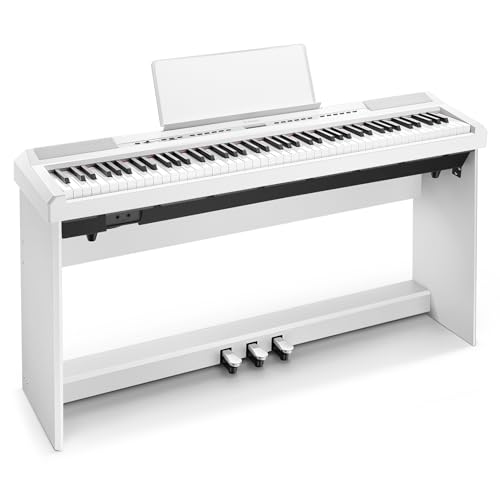Exploring the different types of pianos
Pianos have been a part of music history for centuries and have evolved over time to offer different variations for different needs. Today, there are five main types of pianos that are commonly used, each with its unique features and sound characteristics. In this article, we will explore each of these five types in detail and help you understand the differences between them so that you can make an informed decision when choosing the right piano for your needs.
Grand Pianos
A Grand Piano is the largest and most popular type of piano. As the name suggests, it has a grand presence in any room it is placed in and is known for its rich sound quality. Grand Pianos are available in different sizes, ranging from 5 to 9 feet with larger ones offering better sound quality. They have a unique soundboard, which allows for a more extensive range of tones and better harmonics, making them ideal for classical music and performing in large venues. Grand Pianos are often found in concert halls or grand rooms and are considered the classic piano used in music.
Upright Pianos
Upright Pianos, also called vertical pianos, are compact and take up less space than grand pianos. Their strings and soundboard are placed vertically, which can affect the overall sound quality, but modern upright pianos are designed to improve the sound. They come in different heights, ranging from 36 to 60 inches, and are often found in homes and music schools. While the sound quality might not rival that of grand pianos, upright pianos still offer an excellent option for practicing and learning the piano.
Digital Pianos
Digital Pianos, also known as electronic pianos or keyboards, are modern versions of pianos that use digital technology to imitate the sound of traditional pianos. These pianos are ideal for those who want a piano that is portable, doesn’t require tuning and can play different sounds other than the traditional piano. Digital pianos come in different sizes and can have various features, including demo songs, metronome, and sound effects. They are popular among beginners, performers, and those who want a more modern twist on traditional pianos.
Electric Pianos
Electric Pianos are similar to digital pianos but are designed to mimic the sound of classic electric pianos like Wurlitzer or Rhodes. Like digital pianos, electric pianos do not require tuning and can offer various sound effects. They come in different sizes and are often more compact than traditional pianos, making them ideal for smaller spaces. Electric pianos are popular among jazz and rock musicians who want to experiment with different sounds and styles.
Stage Pianos
Stage Pianos are designed for musicians who perform on stage, as the name suggests. They are similar to digital pianos but have a more robust build quality and are designed to withstand the rigors of live performances. Stage pianos come with various features including MIDI in/out, USB connectivity, and built-in speakers. They are popular with musicians who want a portable, reliable, and high-quality piano that can be easily moved from one location to the other.
Choosing the right piano for your needs
Choosing the right piano largely depends on your playing style and needs. Each type of piano has distinct characteristics and features that make it ideal for specific situations. A Grand Piano, for example, is an excellent option for live performances and classical music, while an electric piano might be perfect for jazz musicians. Understanding the differences between each type of piano is crucial in making an informed decision that will help you achieve your musical goals.






